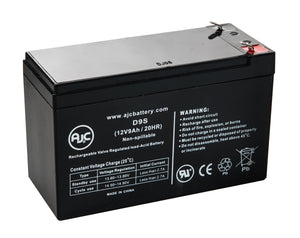Orders over $99

A Few Things to Know About Powersports Batteries
Powersports vehicles are increasingly popular not only for recreation but many have started to adopt them for work due to their versatility, reliability and ability to move in a variety of terrain. We see ATV & UTV's helping to patrol beaches, motorcycles in use by police departments, snowmobiles throughout ski resorts and personal watercraft used at marina's. This increase in use as a work craft has added increased compliance requirements. Increased use in recreation circles has increased demand. In both situations, the battery is a key component to keep things operational.
The battery in your powersport vehicle is hardier than batteries for your kids Power Wheels, but it still wants some attention to keep it running at its peak efficiency. These different powersport vehicles, motorcycles, ATVs, snowmobiles and personal watercraft are all powered by a motor that requires a battery to start it.
Powersports Battery Facts
The battery you need for your powersport vehicle is different than the batteries that run a wheelchair or scooter. You need a battery with higher cold cranking amps or CCA. Cold cranking Amps correlates directly to powersports battery performance. The higher the CCA, the better the battery can start your vehicle. CCA is the current that the battery can output for thirty seconds at zero degrees Fahrenheit.
The type of battery for powersport vehicles is generally called a valve regulated lead acid (VRLA) battery. Some of the advantages of this battery type are that they:
- are sealed and won’t spill, so they are safer
- can be mounted on their sides in addition to flat
- are maintenance free
- don’t emit fumes
- are more resistant to vibration
VRLA batteries come in two types:
- Gel Batteries
- AGM (absorbed glass mat) batteries
Gel batteries are the older of the two technologies, and they lose power more quickly than AGM batteries, especially in colder weather. They also tend to have a shorter life span.
AGM batteries are suited to colder temperatures and they are great for high current and high power uses. They offer the best starting power, are more durable, and just offer a better value for your money.
Maintenance will help your battery last
Take a good, long look at your battery every month. Make sure it has no cracks and isn’t leaking. Check the terminals, and clean them if they show signs of corrosion. Make sure the connectors are tight once a month or right after a spill. Loose connectors might mean your vehicle won’t start at all, or intermittently. Keep the battery charged, too. The old wives tale about letting a battery completely discharge before charging will only shorten the lifespan of your battery.
Even sitting idle between rides, the battery will slightly discharge. But when the vehicle sits idle for a month or more, you should invest in a quality trickle charger. A good trickle charger will be able to detect the charge level of your battery, and automatically adjust the amperage. It will slow as the battery reaches a full charge, saving your battery from over-charging, and keeping it ready to ride.
Replacing the Battery
But even with care and attention, you will eventually need to replace the battery. With good care, the battery should last between 3 and 5 years. Motorcycles and ATVs typically require 12 volt batteries, but the battery needs to provide high power output to start your powersport vehicle. You need a higher cold cranking amp, or CCA, output. As your ride gets older, a higher CCA will allow you to continue to enjoy it. Check the terminals of the batteries to make sure they match and will ensure and easy switch. When it’s time for that replacement powersports battery, check out BatteryClerk for the right battery at the right price.


